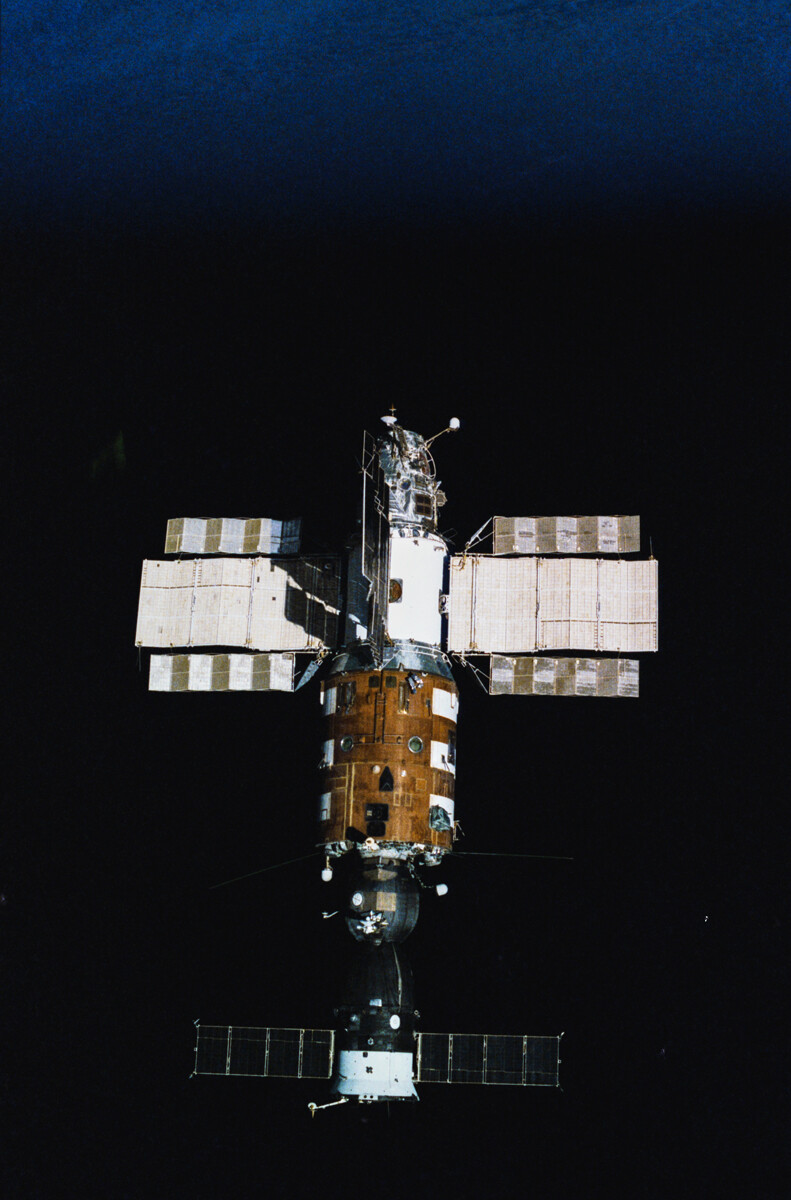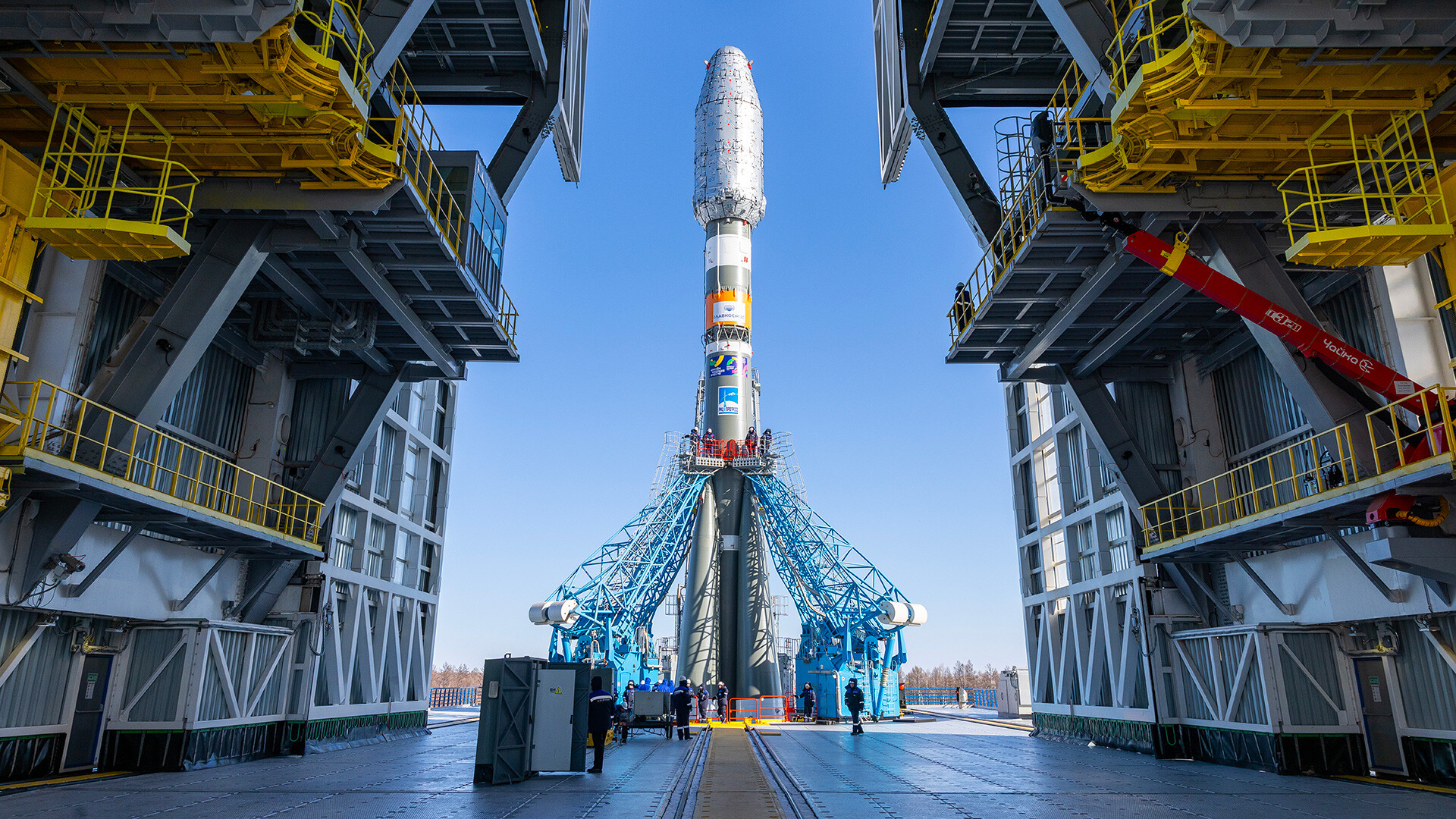
How Soviet cosmonauts once SAVED Earth from a falling ‘dead’ space station

Loss of communication
On February 11, 1985, 9:23AM, the RKA Mission Control Center (TsUP) sent yet another signal to the ‘Salyut 7’ station to check if all systems were operational. The station had been uninhabited for half a year due to a long break in expeditions and was operating autonomously; however, this time, responses stopped coming from it. Something had definitely happened; however, no one on Earth could name the reason for the station’s sudden disconnection.

Without electronic correction of the flight trajectory, ‘Salyut 7’ became an uncontrollable “comet” weighing 19 tons that was slowly approaching Earth. Even with the most optimistic calculations, it was practically impossible to avoid casualties – the debris that wouldn’t burn in the atmosphere could hit cities. However, this scenario didn’t fully convince both TsUP and the country’s leadership. The main reason for launching a rescue mission (however cynical it sounds) was that a catastrophe of such a scale would have caused irreparable damage to the reputation of Soviet cosmonautics.
Grueling training
The preparation of a rescue operation began straight after the disconnection of ‘Salyut 7’. By the middle of March, cosmonauts for the mission had been approved – the most experienced of all. The crew commander was Vladimir Dzhanibekov; with him, flight engineer Viktor Savinykh was also chosen.
Their training lasted four months: all this time, Dzhanibekov prepared to “catch” the station in mid-flight, working out a variety of different scenarios in a simulator. A mistake could cost the lives of the cosmonauts themselves, as well as people on Earth.

Savinykh studied all available documentation on ‘Salyut 7’, since the cause of the station’s disconnection was still a mystery. Aside from that, he had to learn how to crawl around the model of the station in absolute darkness – there no longer was any electricity on ‘Salyut 7’.
Rescue spaceship ‘Soyuz T-13’ was also altered. A part of it was reserved for food supplies for a long period of time – it was unknown how long the cosmonauts would spend on the “dead” ‘Salyut 7’ and food in its cargo holds could have been rendered unfit for consumption, due to space cold.
Space chase
In the early morning of June 6, 1985, Dzhanibekov and Savinykh began the rescue operation from the Baikonur Cosmodrome. The rescuers had only one chance for success at a height of 300 kilometers over Earth’s surface.

On the second day of their flight, Dzhanibekov and Savinykh approached ‘Salyut 7’ – according to their calculations, only 10 kilometers separated them from their target. A little “star” already glistened beyond the porthole, which gradually became brighter and brighter. The rescuers began preparing to perform the hardest maneuver in the history of cosmonautics. In automatic approach mode, Dzhanibekov reduced the distance to 2.5 kilometers. Then, he switched to manual control and started a gradual docking approach. However, having flown close enough, the cosmonauts realized that they had made a mistake…

‘Salyut 7’ was turned with its disabled docking port to the rescuers. In this position, they had only two options: return to Earth or try to circle the station. The latter maneuver, however, could cost both of the cosmonauts their lives. Dzhanibekov asked for permission from TsUP. Long silence played with their nerves, but, after several minutes, the cosmonauts received a response: they had to try.
The circling of the station went successfully, thanks to the long training and Dzhanibekov’s experience. Now, he observed the working docking station through a porthole – all they had left was to finish docking: in manual mode, they had to meet certain junctions to an accuracy of a centimeter. If Dzhanibekov jerked the steering wheel even a millimeter, ‘Soyuz 7’ could easily damage the docking port or make a breach in ‘Salyut 7’s hull, which meant mission failure.

The spaceship froze for a moment. The cosmonauts felt a light push, then the clang of automated latches sounded – the ‘Soyuz’ had securely docked to the “dead” ‘Salyut 7’.
Mission possible
Even then, the rescue operation was far from finished – they had to bring the station “back to life”. Dzhanibekov and Savinykh prepared to enter the silent compartments of the drifting station. All the work had to be done manually – the automated systems had malfunctioned. They opened a small valve in the door to let the air from the ‘Soyuz’ to the compartments of ‘Salyut 7’; when the pressure was equalized, they entered the station.

They confirmed that there was no electricity on the station. All systems were off and all devices had been exposed to low temperatures; it was unclear if they could be switched on again. The batteries were also out of order. And it was too dangerous to provide power from the ‘Soyuz’ – if the electric network shorted out, it could disable all electronics on their ship, which meant sure death.

There was only one way – to start ‘Salyut 7’s power directly from solar panels. With ‘Soyuz’s engines, they positioned the station in such a way so sunlight would fall onto the panels. And the station’s devices began showing signs of life. A day later, Savinykh decided to connect batteries to the station’s energy system and ‘Salyut 7’ came back to life.
In total, the cosmonauts spent more than 100 days on ‘Salyut 7’. Over this time, they didn’t just fix the station, but also updated the majority of electronics on it. In the repair process, they found the cause of all the malfunctions – one of the sensors on the batteries had failed and was sending a false signal that all batteries were fully charged. The on-board computer switched the solar panels off, so, one day, the station’s energy was depleted and it fell silent.
 Vladimir Dzhanibekov and Viktor Savinykh
Vladimir Dzhanibekov and Viktor Savinykh
The TsUP managed to restore remote control over the station after just seven days and the cosmonauts switched to routine activities.
On November 21, 1985, the ‘Soyuz’ returned to Earth, while ‘Salyut 7’ was left in orbit and continued to operate in autonomous mode.
By 1990, the station exhausted its safety margin and began descending 6-8 kilometers per day. In the night from February 6 to February 7, 1991, ‘Salyut 7’ entered the upper atmosphere at a speed of 30,000 km/h, where it practically burned up entirely.












